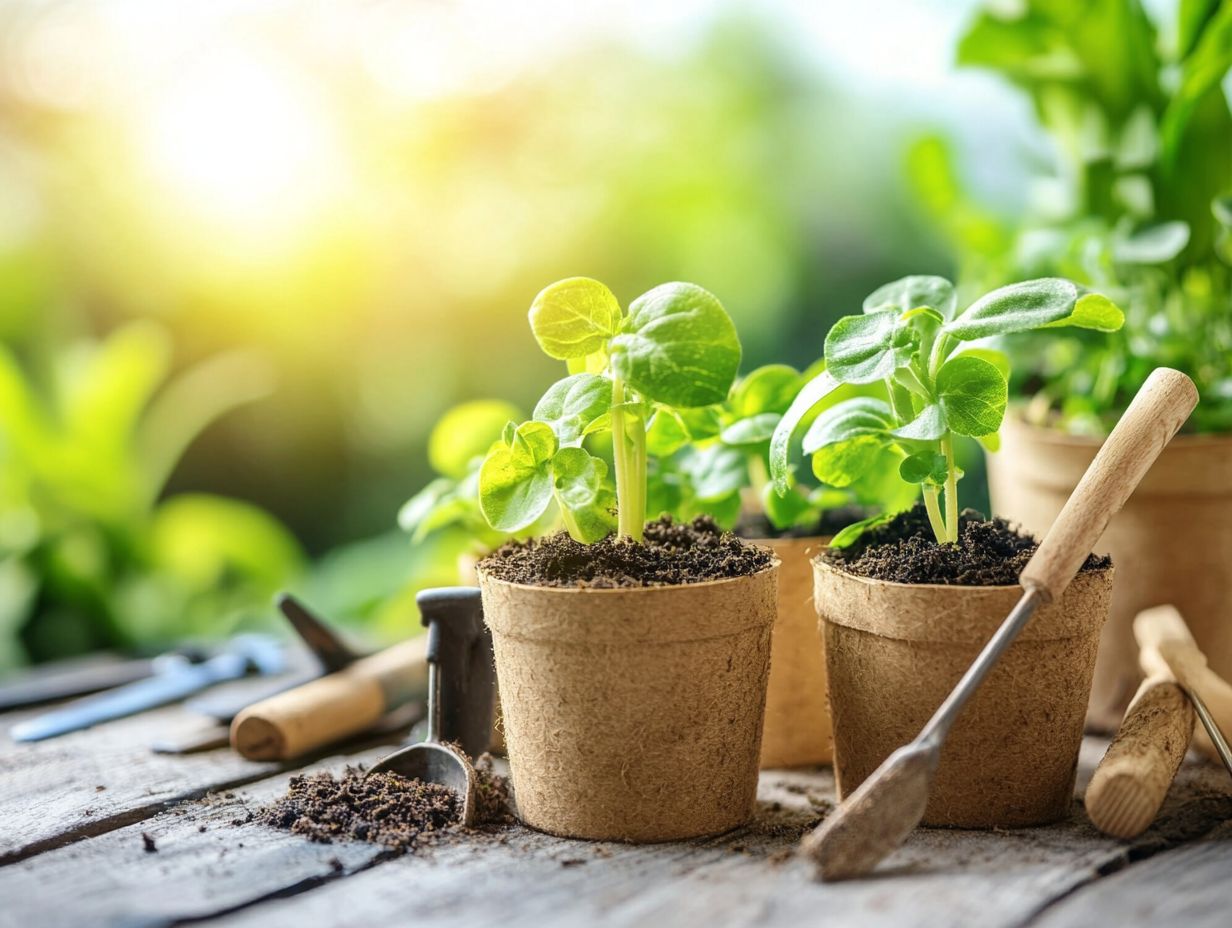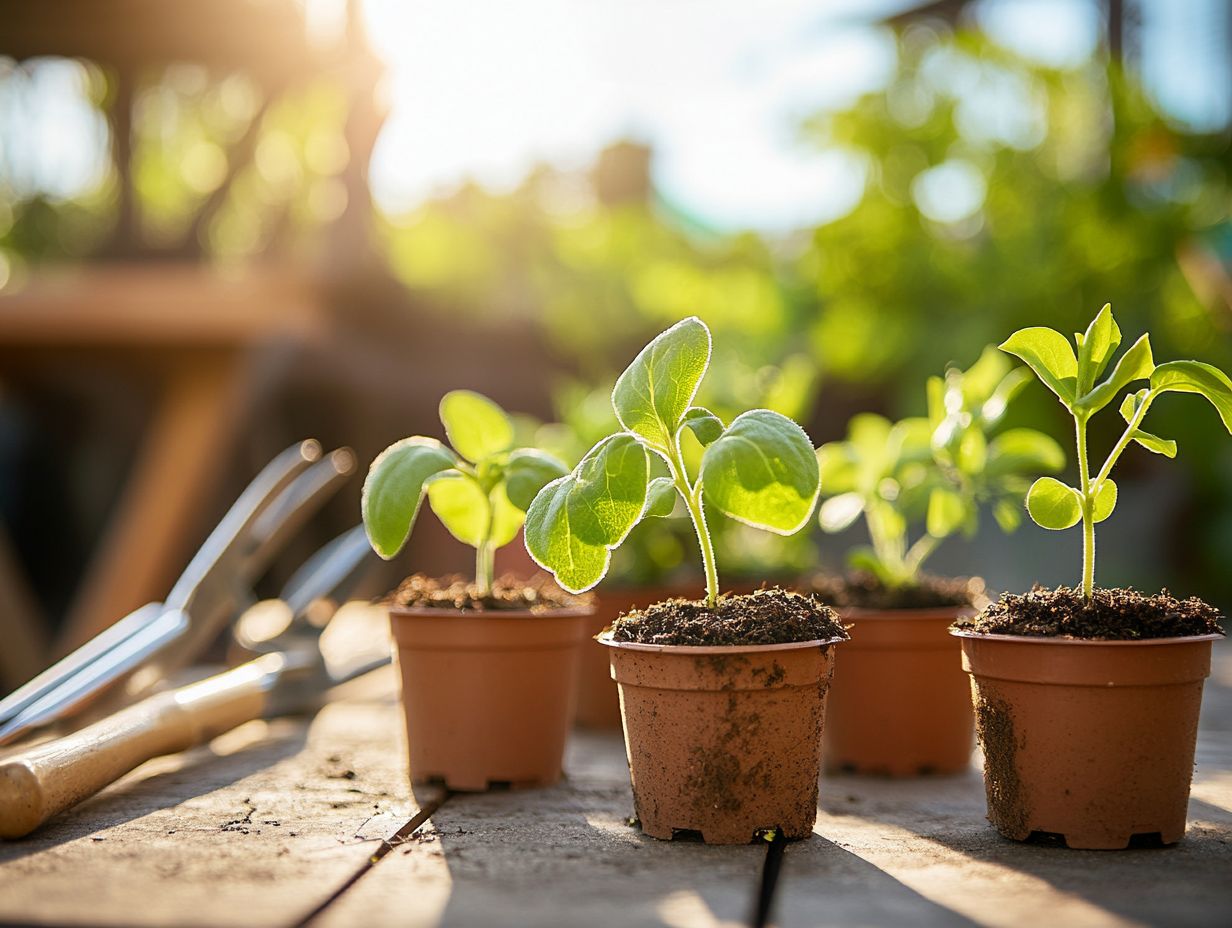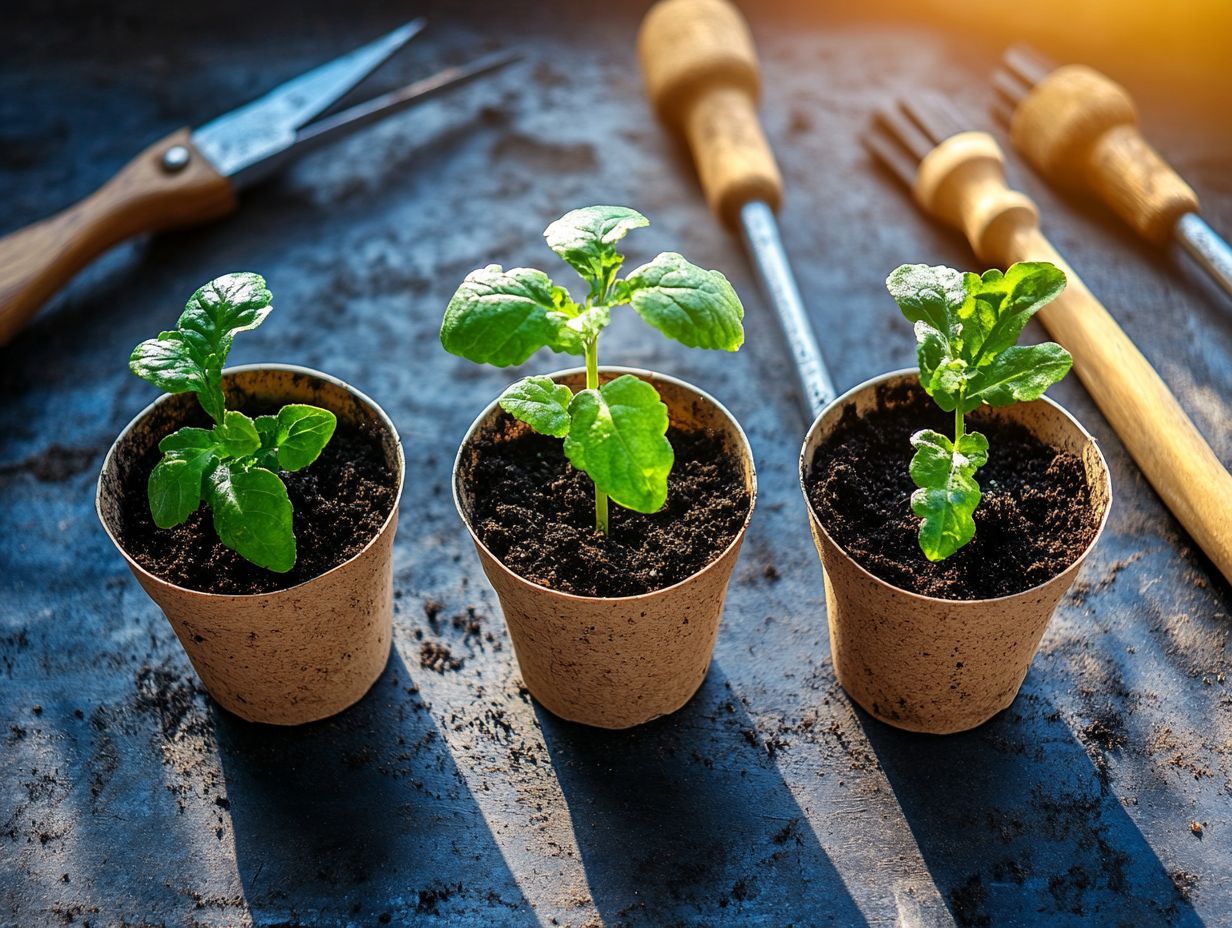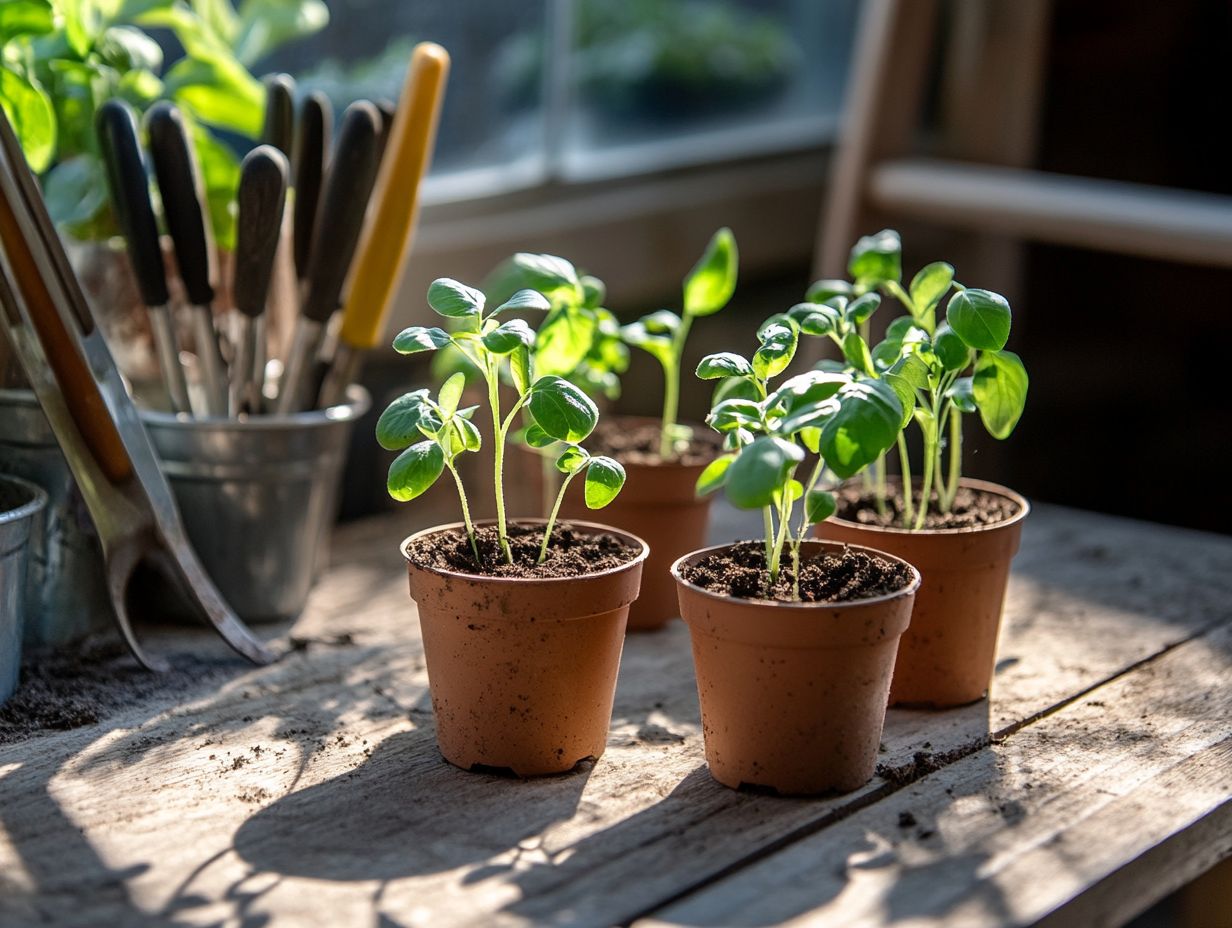What Are the Benefits of Eco-Conscious Travel?
Plant propagation through cuttings offers a fulfilling opportunity for you to enhance your garden or indoor plant collection.
Knowing how to root plants is key to your success. Things like light and temperature will affect how well your cuttings grow.
From selecting the ideal cuttings and preparing them with care to choosing the right rooting mediums, each step is crucial in this journey.
Get ready to dive into this guide! You’ll learn how to master rooting plant cuttings and watch your garden thrive.
Contents
- Key Takeaways:
- Understanding Rooting Plant Cuttings
- Factors Affecting Rooting Success
- Preparing Cuttings for Rooting
- Rooting Mediums and Techniques
- Caring for Rooted Cuttings
- Frequently Asked Questions
- What are the best conditions for rooting plant cuttings?
- How do I create a warm and humid environment for rooting plant cuttings?
- Why is drainage-friendly soil important for rooting plant cuttings?
- Can I use tap water to water my rooting plant cuttings?
- What is the ideal temperature range for rooting plant cuttings?
- How long does it take for plant cuttings to root?
Key Takeaways:

- Rooting is the process of growing a new plant from a cutting. It is important for plant propagation, especially for species like Pothos and Fiddle Leaf Fig.
- The best conditions for rooting include proper lighting, temperature, humidity, and moisture.
- Rooting can be done using techniques like rooting hormones, water propagation, or soil propagation.
Understanding Rooting Plant Cuttings
Understanding the process of rooting plant cuttings is vital for you as a home gardener who wants to propagate your cherished plants effectively.
By rooting, you can take a healthy cutting from a mature plant and encourage it to grow roots in a suitable medium, ultimately leading to a new plant that can flourish in your indoor space.
Propagation techniques can vary by plant family. However, watching your cutting grow roots is deeply satisfying. In this guide, you’ll discover the essential factors that contribute to successful rooting, including the right environmental conditions and best lighting conditions for plant propagation and preparation methods.
What is Rooting and Why is it Important?
Rooting is the art of coaxing a cutting from a plant to develop roots in a suitable medium, making it an essential skill in the realm of plant propagation.
By mastering this technique, you not only save money on new plants but also embark on a rewarding journey of nurturing new growth from a simple cutting, whether it s rosemary, lavender, or another herb.
Whether you re tending to popular houseplants like pothos or exploring succulent varieties, there are various propagation methods to discover, each tailored to specific species.
Common techniques such as water propagation, soil propagation, and even air layering, which involves rooting a part of the plant while it’s still attached, can significantly enrich your plant collection without breaking the bank.
The emotional satisfaction that comes from witnessing a cutting transform into a flourishing plant fosters a deeper connection between you and your green companions, making the entire experience truly worthwhile.
Factors Affecting Rooting Success
Several key factors influence the success of rooting plant cuttings, ensuring they transform into healthy, mature plants that can thrive in their environments. By paying attention to these elements, you can maximize the chances of your cuttings flourishing and ultimately blooming into the vibrant plants you envision.
Environmental Conditions
Creating the right environmental conditions is paramount for promoting healthy growth in your rooted cuttings, particularly regarding light, water, and temperature.
To achieve optimal results, it s essential to provide your cuttings with indirect light, as direct sunlight can scorch them and impede the rooting process.
Maintaining consistent water levels is equally vital; overwatering can suffocate the roots, while underwatering can lead to dehydration.
Aim to keep the temperature between 65 F and 75 F, creating a warm and inviting atmosphere that encourages robust root development. By paying close attention to these factors, you can cultivate thriving plants that adapt well to their surroundings, ultimately enhancing your overall indoor gardening success.
Plant Species and Variety

Different plant species and their varieties showcase unique characteristics that can significantly impact the effectiveness of the rooting process.
Take the Monstera Albo, for example! Its striking variegated leaves call for specific care during propagation. Opt for stem cuttings that include a node for the best chance of optimal growth, especially when considering the specific needs of the plant family.
On the flip side, Pothos known for its robust nature thrives in both water and soil propagation, making it an ideal choice for beginners.
Then there are Snake Plants, which are wonderfully forgiving. They can root from leaf cuttings, although they may take a little longer. Grasping these nuances boosts your success rate and enhances the overall health and vigor of each plant, leading to lush growth and vibrant foliage throughout their lifecycle.
Preparing Cuttings for Rooting
Properly preparing your cuttings is crucial for ensuring successful propagation. This foundational step sets the stage for robust root development and healthy growth.
Choosing the Right Cuttings
Choosing the right cuttings is crucial! This significantly influences your chances of successful rooting and growth.
As you embark on this endeavor, consider the strength of the stem and overall leaf health of the cuttings you re selecting. Healthy stems should feel firm to the touch and exhibit a vibrant green color, indicating strength and resilience.
Don’t overlook the leaves; vibrant, undamaged foliage signals that the cutting possesses the vitality necessary for successful propagation. By truly understanding these factors, you elevate your horticultural experience and enhance your chances of cultivating robust new plants.
Mastering these identification techniques is essential for anyone serious about honing their propagation skills.
Preparation Techniques
Employing effective preparation techniques is essential for encouraging your cuttings to develop roots successfully in their new environment and thrive in your indoor space.
To begin, it’s crucial to trim the cuttings properly. Snip away any excess foliage and make clean diagonal cuts at the base to promote better water absorption. Using rooting hormones, special substances that help plants grow roots faster, can significantly boost your chances of successful root development. Additionally, learning how to water plant cuttings effectively is essential for their health.
It’s vital to ensure the right soil conditions. A well-draining mix that retains some moisture while allowing excess water to escape creates the ideal environment for your cuttings. Diligently monitoring water levels helps you maintain the perfect balance; too much moisture can lead to rot, while too little can stifle growth.
Together, these careful preparation steps lay the groundwork for thriving plants.
Rooting Mediums and Techniques
Choosing the right rooting medium and technique is crucial for promoting robust root growth and successfully nurturing your newly propagated cuttings.
Common Mediums and Their Uses

Common rooting mediums include soil and water, each offering unique advantages that cater to your cuttings and foster robust growth.
When considering propagation stations, it’s essential to recognize that while water may appear to be the straightforward option allowing you to easily observe root development potting soil often provides the vital nutrients and support that many plants crave. Soil excels at retaining moisture and creating a stable environment, which can be crucial for certain species that flourish in nutrient-rich conditions. Conversely, water propagation may be perfect for faster-growing varieties, facilitating quicker root formation.
Each medium presents its own set of benefits and drawbacks. Pinpointing the right choice based on the specific types of plants you are working with can significantly influence your success rates and their overall health.
Effective Techniques for Rooting
Implementing effective techniques for rooting cuttings can significantly boost their chances of developing strong roots and thriving in their new environment.
Using glass containers for water propagation allows you to monitor root growth easily while ensuring your cuttings receive ample light. This method fosters a robust root system and promotes overall health by providing a steady supply of moisture. For more tips, check out our guide on how to care for your cuttings while they root.
Exploring specific soil methods like opting for potting soil that drains well or incorporating perlite (a type of volcanic glass that helps improve soil drainage) can enhance drainage and prevent rot, leading to healthier growth.
Unlock the secrets to thriving plants by experimenting with these various techniques. Discover what works best for your particular plants, ultimately paving the way for more successful propagation!
Caring for Rooted Cuttings
After your cuttings root successfully, caring for them is essential for their growth and success. This facilitates a smooth transition into their new environment and promotes healthy growth.
Transplanting and Maintenance Tips
Transplanting rooted cuttings demands your careful attention to ensure their health and continued growth in a new pot or container.
Choosing the right soil is vital; opt for drainage-friendly soil enriched with organic matter to promote robust root development. Select a pot that is only slightly larger than the original container, giving the roots enough room to breathe without feeling overwhelmed. This approach helps retain moisture and prevents root rot.
It s crucial to acclimate your cuttings gradually to their new environment to minimize transplant shock. Regularly check the soil moisture and provide appropriate care by monitoring light conditions and humidity levels. Act swiftly to ensure your young plants thrive in their fresh surroundings!
Frequently Asked Questions
As a new plant owner, you might find joy in learning about various plant families and their care techniques.
What are the best conditions for rooting plant cuttings?

The best conditions for rooting plant cuttings include a warm and humid environment, drainage-friendly soil, and indirect light to ensure strong roots.
How do I create a warm and humid environment for rooting plant cuttings?
To create a warm, humid environment, cover the cuttings with a clear plastic bag or place them in a propagator tray with a lid.
Why is drainage-friendly soil important for rooting plant cuttings?
Drainage-friendly soil helps prevent waterlogging, which can lead to root rot and hinder the growth of new roots on the cuttings, especially during the initial stages of their growth.
Can I use tap water to water my rooting plant cuttings?
No, it’s best to use distilled or Brita filter water to avoid any chemicals or impurities that can harm the cuttings’ delicate root systems.
What is the ideal temperature range for rooting plant cuttings?
The ideal temperature range for rooting plant cuttings is between 65-75 F (18-24 C) to promote root growth without causing stress to the plant. Maintaining this will build your confidence as a new plant owner!
How long does it take for plant cuttings to root?
The time it takes for plant cuttings to root can vary, but it typically takes 2-6 weeks for visible roots to form. However, some plants like Monstera Albo and Fiddle Leaf Fig may take longer or shorter depending on the species and environmental conditions.






